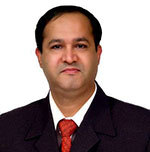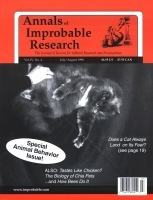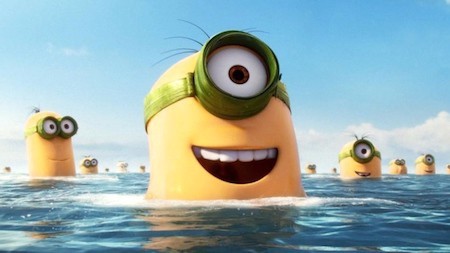Marc Abrahams's Blog, page 319
July 11, 2015
Booze, beer, and another way to protect mosquitoes
Mosquitoes can be resilient, but even they can use some help in surviving a sterilizing bout of x-ray radiation. This study studies several kinds of help:
“The effect of the radio-protective agents ethanol, trimethylglycine, and beer on survival of X-ray-sterilized male Aedes aegypti.” Stacy D. Rodriguez, Ramaninder K. Brar, Lisa L. Drake [pictured here], Hannah E. Drumm, David P. Price, John I. Hammond, Jacob Urquidi, and Immo A. Hansen, Parasites and Vectors, vol. 6, no. 1, 2013, p. 211. (Thanks to investigator Bill Saidel for bringing this to our attention.) The authors, at New Mexico State University, Las Cruces, report:
“sterilization with ionizing radiation is the method of choice for effective sterilization of male insects for most species. The lack of gentle radiation methods has resulted in significant complications when [this method of sterilization] has been applied to mosquitoes….
“Conclusion: Our results suggest that treatment with ethanol, beer, or trimethylglycine before irradiation can be used to enhance longevity in mosquitoes.”

Ig Nobel-winning research could, maybe, save McDonald’s from ‘Minions’ lawsuits
McDonald’s receives complaints about ‘Minions’ toys using curse words
by Marley Jay, The Associated Press
Published Friday, July 10, 2015
NEW YORK — McDonald’s swears up and down that the little yellow “Minions” Happy Meal toy is speaking only nonsense words and not something a little more adult.
Experts say the company may be right, and the curse words many hear may be tied to how our brains are primed to find words even when they’re not really there.
The world’s largest hamburger chain and purveyor of Happy Meals said Friday that it doesn’t plan to take the talking Happy Meal toy out of distribution, even though some customers say it sounds like it’s cursing. A toy bought by The Associated Press made a sound that could be interpreted as the phrase often abbreviated as “WTF.” Another phrase sounded like it could be “Well I’ll be damned.” The sound quality of the toy makes it hard to say definitively who is right….
The technical name for the phenomenon is “pareidolia,” hearing sounds or seeing images that seem meaningful but are actually random. It leads people to see shapes in clouds, a man in the moon or the face of Jesus on a grilled cheese sandwich.
The audio form of pareidolia has been causing confusion for years and years. In the 1960s the FBI investigated The Kingsmen’s version of the song “Louie Louie” after concerned citizens complained that the lyrics were obscene. The band denied it, but hardly anybody could figure out the lyrics, including the FBI. The agency officially declared the words unintelligible….
Last year a group of researchers published a paper called “Seeing Jesus in toast: neural and behavioural correlates of face pareidolia.” They wanted to understand what happens in the brains of people who see a face pop out of the toaster, and they received an Ig Nobel Prize, given to scientists who do unusual, imaginative or odd work of questionable importance.
For context, here’s the song “Louie Louie”:

July 10, 2015
The analgesic-sparing benefits of texting
Texting may be an adequate substitute for swearing, suggests a study.
The 2010 Ig Nobel Peace Prize was awarded to Richard Stephens, John Atkins, and Andrew Kingston of Keele University, UK, for confirming the widely held belief that swearing relieves pain. [They published a paper describing their research: “Swearing as a Response to Pain”, in Neuroreport, vol. 20 , no. 12, 2009, pp. 1056-60.]
But could there be other as-yet-under-exploited non-chemical pain avoidance strategies? A recent study published in the journal Pain Medicine, Volume 16, Issue 4, pages 667–672, April 2015, found that :
“Text messaging during surgery provides analgesic-sparing benefits that surpass distraction techniques, suggesting that mobile phones provide new opportunities for social support to improve patient comfort and reduce analgesic requirements during minor surgeries and in other clinical settings.”
In a randomly controlled trial, text messaging performed significantly better than doing nothing, or playing Angry Birds™ on a phone. See: Jamie E. Guillory PhD, Jeffrey T. Hancock PhD, Christopher Woodruff MD, FRCPC and Jeffrey Keilman MD, ‘Text Messaging Reduces Analgesic Requirements During Surgery’
Bonus Question: Could further work evaluate the effectiveness (or otherwise) of sending text messages which feature swearing?
[Note: The photo depicts co-author Professor Jeffrey T. Hancock of Cornell University, which funded the study.]

Dilemmas in treating self-identifying vampires
This week’s Vampire Study of the Week is:
“Do We Always Practice What We Preach? Real Vampires’ Fears of Coming out of the Coffin to Social Workers and Helping Professionals,” D.J. Williams and Emily E. Prior, Critical Social Work, vol. 16, no. 1, 2015, pp. 79-92. (Thanks to Ivan Oransky for bringing this to our attention.) The authors, at Idaho State University, the College of the Canyons, and the Center for Positive Sexuality, explain:
Nobody knows an exact number, but there are many people worldwide who self-identify as vampires (Atlanta Vampire Alliance, 2007). Despite the use of the word “vampire,” people with such alternative identities do not seem to be psychologically and socially unstable (Browning, in press; Laycock, 2009a, 2009b; Williams, 2008, 2009). Even still, it is not surprising that vampires prefer to keep these alternative identities private (i.e., stay “in the coffin”) due to fears of being misunderstood and discriminated against (Williams, 2008)….
The first author of this study has worked specifically with self-identified vampires for over five years, and both authors have considerable experience working amicably with multiple alternative communities…. Approval to conduct the study was granted through a university institutional review board (IRB). Well-established and personally known contacts, who are vampire leaders in Atlanta, Georgia, were asked to select 11 adult participants through purposive sampling. In an effort to ensure self-identities were chronic and stable, participants were included if they self-identified as vampires for several years.
Here is a photo of lead author D.J. Williams, who has worked specifically with self-identified vampires for over five years:
Here are the studies to which the study alludes:
Browning, J. E. (in press). The real vampires of New Orleans and Buffalo: A research note
towards comparative ethnography. Palgrave Communications.
Laycock, J. (2009a). Vampires today: The truth about modern vampirism. Westport, CT:
Praeger.
Laycock, J. (2009b). Modern vampires: Your neighbors and spouses. Religion Dispatches (May
28, 2009). Retrieved on October 29, 2009 from: http://www.religiondispatches.org
Laycock, J. (2010). Real vampires as an identity group: Analyzing the causes and effects of an
introspective survey by the vampire community. Nova Religion, 14, 4-23.
Williams, D J (2008). Contemporary vampires and (blood-red) leisure: Should we be afraid of
the dark? Leisure/Loisir, 32, 513-539.
Williams, D J (2009). Deviant leisure: Rethinking “the good, the bad, and the ugly.” Leisure
Sciences, 31, 207-213.

July 9, 2015
Fake impact factor factories
 We’ve all heard about nefarious corporations employing linkfarms (or cyber-robots) to artificially bump-up their Facebook ‘likes’ – or nogoodnik book publishers who pay fake reviewers to positively puff up their online book reviews – but surely the earnest and scholarly world of academic journal publishing is above that sort of thing? Maybe think again. A June 2015 paper in the journal Electronic Physician draws attention to ‘Impact Factor’ manipulation. [Impact Factors are widely-accepted rankings used to compare different journals within their field] Author Dr. Mehrdad Jalalian (Editor-in-Chief of Electronic Physician) alerts to the activities of fake impact factor companies which he says are being used to skew the ratings of some journals.
We’ve all heard about nefarious corporations employing linkfarms (or cyber-robots) to artificially bump-up their Facebook ‘likes’ – or nogoodnik book publishers who pay fake reviewers to positively puff up their online book reviews – but surely the earnest and scholarly world of academic journal publishing is above that sort of thing? Maybe think again. A June 2015 paper in the journal Electronic Physician draws attention to ‘Impact Factor’ manipulation. [Impact Factors are widely-accepted rankings used to compare different journals within their field] Author Dr. Mehrdad Jalalian (Editor-in-Chief of Electronic Physician) alerts to the activities of fake impact factor companies which he says are being used to skew the ratings of some journals.
“Currently, there are many fake impact factor companies and misleading metrics, perhaps as many as 20–30, but the actual number is unknown. These fake companies have infected the world of academic publishing, and it really hurts those of us who wish to uphold scientific authenticity and credibility when we see these low quality and questionable journals.”
Even more discouraging, says the author :
“ […] is that fact that some truly reputable peer-reviewed journals and some universities have been duped by the cybercriminals and actually have added the logo of the fake impact factor companies and their assigned metrics on their journals’ websites. In one specific case, I called the Editor-in-Chief of a high-quality, university-based medical journal to ask him to remove the metrics assigned to his journal by one of the most ‘reputable’ fake impact factor companies. Much to my amazement and disappointment, he refused to do so even though he knew that the metric was fake.”
see: ‘The story of fake impact factor companies and how we detected them.’

Cat dropping, for curiosity’s sake
The Skull in the Stars blog writes about the practice, back when, of cat turning:
One thing I’ve learn from studying the history of science is that scientists are human beings. Often incredibly weird, weird human beings. For example: in the mid-to-late-1800s, an exciting era in which the foundations of electromagnetic theory were set and the electromagnetic nature of light was discovered, a number of the greatest minds in physics were also preoccupied with a rather different problem.
Dropping cats….
It is almost impossible to overstate the achievements of James Clerk Maxwell (1831-1879), widely regarded as the greatest theoretical physicist of the 19th century. His greatest achievement was the final unification of electricity and magnetism by the completion of a set of mathematical equations that are now known asMaxwell’s equations, and the brilliant deductive leap that these equations demonstrate that light itself must be an electromagnetic wave. Maxwell also made major contributions to thermodynamics and the related kinetic theory of gases, and if these were not enough he also made the first demonstration of color photography. Ever.
He also dropped cats.…
 The Annals of Improbable Research explored several aspects of cat dropping in the special Animal Behavior issue, in 1998. Especially pertinent: the article “Does a Cat Always Land on Its Feet?”
The Annals of Improbable Research explored several aspects of cat dropping in the special Animal Behavior issue, in 1998. Especially pertinent: the article “Does a Cat Always Land on Its Feet?”
BONUS (possibly unrelated): The study:
“Cat Bite Infections of the Hand: Assessment of Morbidity and Predictors of Severe Infection,” Nikola Babovic, BA, Cenk Cayci, MD, Brian T. Carlsen, Journal of Hand Surgery, Volume 39, Issue 2 , Pages 286-290, February 2014.
BONUS (only metaphorically related): The dead cat bounce in the stock market

Ig Nobel ceremony tickets go on sale TODAY, July 9, at NOON
Tickets for the 25th First Annual Ig Nobel Prize ceremony will go on sale on TODAY —THURSDAY, JULY 9, 2015— at NOON (Boston time).
They will be available exclusively from the Harvard Box Office (www.boxoffice.harvard.edu) (online, by phone, and at Holyoke Center).
(If you want us to notify you by email, about future events, add yourself to the Improbable events notification private email list.)
The ceremony itself will happen on Thursday evening, September 17, at Sanders Theatre, Harvard University, Cambridge, Massachusetts, USA, Planet Earth, Milky Way, etc.
Here’s the ceremony poster (click on the image to see a hi-res version that you can download):

July 8, 2015
Podcast #19: How to pour the perfect 2nd cup of coffee
Perfect cups of coffee, glug-glugging bottles, food in your mouth, and drinking fish turn up in this week’s Improbable Research podcast.
Click on the “Venetian blinds” icon — at the lower right corner here — to select whichever week’s episode you want to hear:
SUBSCRIBE on Play.it or iTunes, to get a new episode every week, free.
[NEWS: Soon, the podcast will also be available on Spotify.]
This week, Marc Abrahams tells about:
How to pour the perfect second cup of coffee. (Richman, Robert M. (2001). ‘Recursive Binary Sequences of Differences.’ Complex Systems 13: 381–92. Featuring dramatic readings by Sue Wellington.)
The glug-glug of bottles. (Clanet, Christophe, and Geoffrey Searby (2004). ‘On the Glug-Glug of Ideal Bottles.’ Journal of Fluid Mechanics 510: 145–68. / “Container having no-glug pouring spout.” U.S. Patent 5,346,106, issued to Carl D. Ring, September 13, 1994./ “Anti-glug vent for plastic pails.” U.S. Patent 5,906,288, issued to Davis B. Dwinell, May 25, 1999 /.”Low cost spill-and-glug-resistant cup and container.” U.S. Patent 7,757,886, issued to I.-C. Ho, July 20, 2010. / “A continuous swallowing movement measuring device and method for measuring a continuous swallowing movement,” Canadian patent CA2575958, issued May 17, 2011, to Hidetoshi Kojima, Hirotaka Kaneda, and Toyohiko Hayashi. Featuring dramatic readings by Chris Cotsapis.) Some “glug-glug” sound is evident in this video of someone pouring Cava from a bottle:
Words for food in your mouth. (“Texture and Chemical Feeling Descriptors That 6-11 Year Olds and Adults Associate With Food in the Mouth,” N. Oram, Journal of Texture Studies, vol. 29, no. 2, May 1998, pp. 185-97. / Szczesniak, A.S. 1972. “Consumer awareness of and attitudes to food texture: 11. Children and Teenagers,” J. Texture Studies 3, 206-217.. Featuring dramatic readings by Jean Berko Gleason .)
How to measure how much fish drink. (“Measurement of Drinking Rates in Fish,” D.H. Evans, Comparative Biochemistry and Physiology, vol. 25, no. 2, May 1968, pp. 751-3. Featuring dramatic readings by Chris Cotsapis.)
A bad reaction to chicken nuggets. (“Reaction to Chicken Nuggets in a Patient Taking an MAOI [a Monoamine oxidase inhibitor],” R. Pohl, R. Balon, and R. Berchou, American Journal of Psychiatry, vol. 145, no. 5, 1988, p. 651. Featuring dramatic readings by Kishore Hari.)
Famous monks with bad breath. (Statheropoulos, M., A. Agapiou, and A. Georgiadou (2006). ‘Analysis of Expired Air of Fasting Male Monks at Mount Athos.’ Journal of Chromatography B 832: 274–79. / Mitsikostas, D. D., A. Thomas, S. Gatzonis, A. Ilias, and C. Papageorgiou. (1994). ‘An Epidemiological Study of Headache Among the Monks of Athos (Greece).’ Headache 34 (9): 539–41. Featuring dramatic readings by Jean Berko Gleason.)
Eternity smells a rat. (“Chlorine-36 in Fossil Rat Urine: An Archive of Cosmogenic Nuclide Deposition During the Past 40,000 Years,” M. A. Plummer, F. M. Phillips, J. Fabryka-Martin, H.J. Turin, P.E. Wigand, and P. Sharma, Science, vol. 277, 1997, pp. 538-41. Featuring dramatic readings by Chris Cotsapis.)
Icky-cutesy research. (“Body Snatching: A Grave Medical Problem,” Julia Bess Frank, Yale Journal of Biology and Medicine, vol. 49, no. 4, 1976, pp. 399–410. / “The Study of the Human Remains from Nubia: the Contribution of Grafton Elliot Smith and His Colleagues to Palaeopathology,” H.A. Waldron, Medical History, vol. 44, no. 3, 2000, pp. 363–88. Featuring dramatic readings by Jean Berko Gleason.)
The mysterious John Schedler perhaps did the sound engineering this week.
The Improbable Research podcast is all about research that makes people LAUGH, then THINK — real research, about anything and everything, from everywhere —research that may be good or bad, important or trivial, valuable or worthless. CBS distributes it, both on the new CBS Play.it web site, and on iTunes (and soon, also on Spotify).

Non-crackling campfires not (quite so) relaxing?
Professor , who is a ‘psychobiocultural’ investigator in the Department of Anthropology, at the University of Alabama, Tuscaloosa, US, has performed what might be one of the only studies to have scientifically investigated the relaxing effects of sitting around a campfire. Although his findings confirm that “hearth and campfires induce relaxation as part of a multisensory, absorptive, and social experience”, he has also identified a previously undiscovered factor – the crackling is non-trivial.
“In the course of three studies with varying sensory conditions, I found significant reductions in blood pressure associated with fire with a naturalistic auditory component, confirming commonly perceived relaxation effects of hearth and campfires. However, lack of significant relaxation effects when subjects watch a flickering fire but are deprived of its sound indicate the influence of fire is not a visual ‘trance-inducing’ effect alone.”
See: Hearth and campfire influences on arterial blood pressure: Defraying the costs of the social brain through fireside relaxation in: Evolutionary Psychology 12(5): 983-1003

Bullfighting Injuries: Gore to the groin
Bullfighting injuries to humans tend to cluster in certain places, explains this survey:
 “Matador Versus Taurus: Bull Gore Injury,” Mark Sheldon Lloyd, Annals of the Royal College of Surgeons of England, vol. 86, 2004, pp. 3–5. (Thanks to James Harkin for bringing this to our attention.) The author [pictured here], at Queen Victoria Hospital, East Grinstead, West Sussex, UK, reports:
“Matador Versus Taurus: Bull Gore Injury,” Mark Sheldon Lloyd, Annals of the Royal College of Surgeons of England, vol. 86, 2004, pp. 3–5. (Thanks to James Harkin for bringing this to our attention.) The author [pictured here], at Queen Victoria Hospital, East Grinstead, West Sussex, UK, reports:
“Bull fighting is a reality and the injuries sustained by the matador cause a bizarre pattern of injury that the trauma surgeon must appreciate since they are inflicted in unique circumstances. This article highlights the mechanism of a bull gore injury, the pattern of wounds, and the most appropriate management…. In bull gore injury due to bull fighting, the thigh and lower leg accounts for 50% of all wounds….
“The second commonest site of bull gore injury in the matador is the perineal area. Scrotal avulsion often requires plastic surgical reconstruction.”
Here’s further, penetrating detail from the study:


Marc Abrahams's Blog
- Marc Abrahams's profile
- 14 followers







